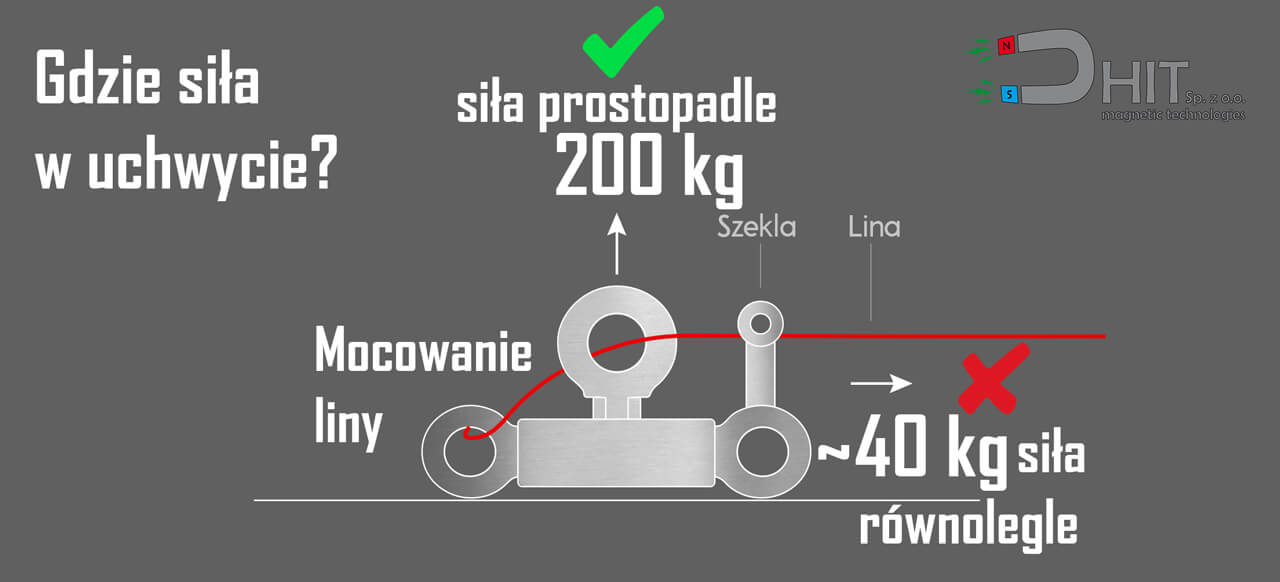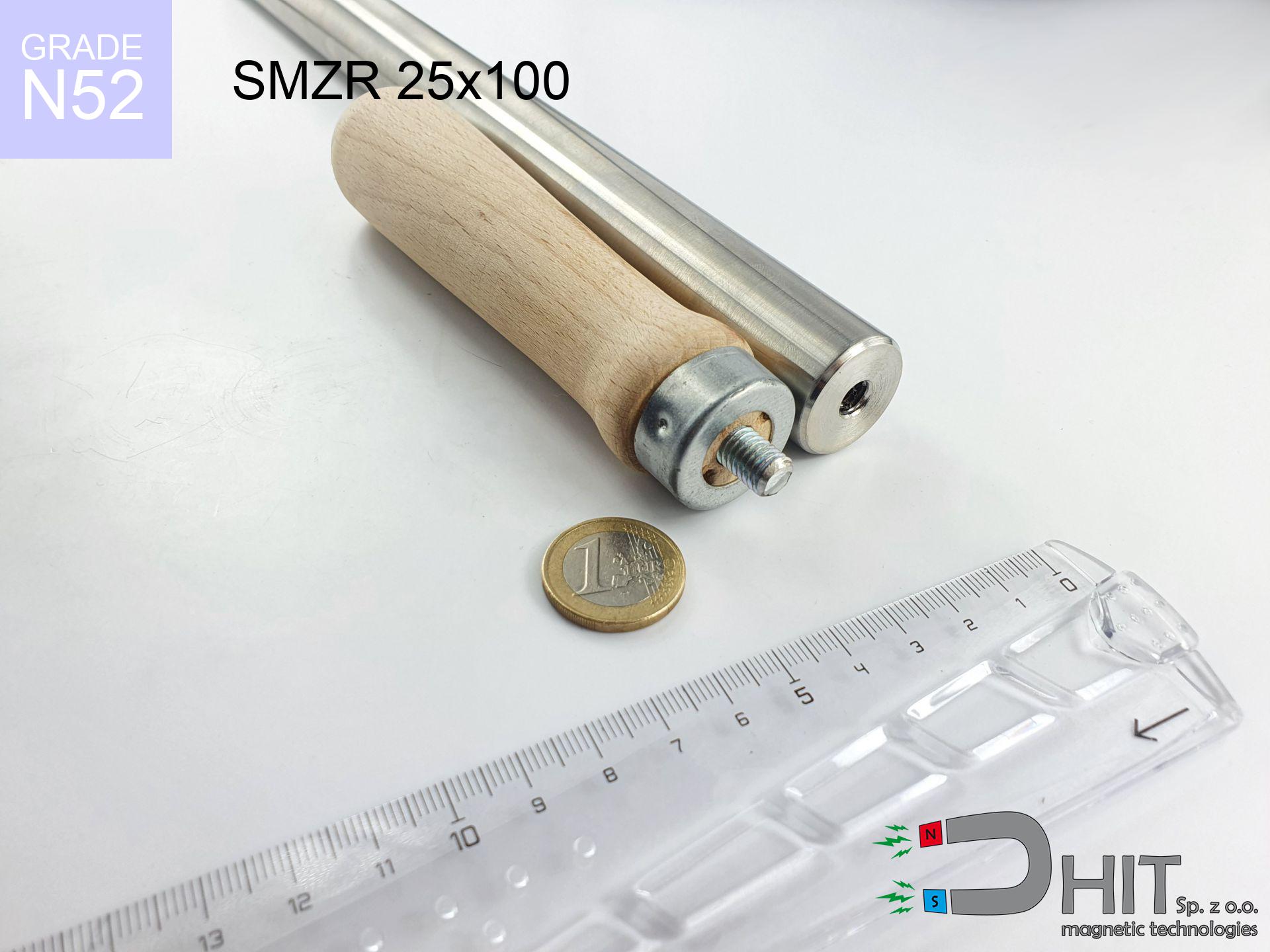UMP 75x25 [M10x3] GW F200 PLATINIUM Lina / N52 - search holder
search holder
catalog number 210434
GTIN: 5906301814092
diameter Ø
75
mm [±0,1 mm]
height
25
mm [±0,1 mm]
capacity ~
365.00 kg / 3579.43 N
max. temperature
≤ 80
°C
catalog number 210434
GTIN: 5906301814092
diameter Ø
75 mm [±0,1 mm]
height
25 mm [±0,1 mm]
capacity ~
365.00 kg / 3579.43 N
max. temperature
≤ 80 °C
300.00 ZŁ gross price (including VAT) / pcs +
243.90 ZŁ net price + 23% VAT / pcs
bulk discounts:
need more quantity?Don't know what to buy?
Give us a call tel: +48 888 99 98 98 or get in touch through contact form on the contact page. You can check the mass as well as the shape of neodymium magnet in our magnetic mass calculator force calculator
Orders placed by 2:00 PM will be shipped on the same business day.
Specification: search holder 75x25 [M10x3] GW F200 PLATINIUM Lina / N52
Magnetic properties of the material N52
Physical properties of sintered neodymium magnets Nd2Fe14B

Product suggestions
Advantages as well as disadvantages of neodymium magnets NdFeB.
In addition to immense strength, neodymium magnets have the following advantages:
- They do not lose their strength (of the magnet). After about 10 years, their strength decreases by only ~1% (theoretically),
- They are exceptionally resistant to demagnetization caused by an external magnetic field,
- In other words, thanks to the glossy nickel, gold, or silver finish, the element gains an aesthetic appearance,
- They exhibit extremely high magnetic induction on the surface of the magnet,
- Thanks to their high temperature resistance, they can operate (depending on the form) even at temperatures up to 230°C and above...
- Thanks to the flexibility in shaping or the ability to adapt to specific requirements – neodymium magnets can be produced in various forms and dimensions, which enhances their versatility in applications.
- Significant importance in the industry of new technologies – are utilized in computer drives, electric drive mechanisms, medical apparatus and other advanced devices.
Disadvantages of neodymium magnets:
- They can break as they are fragile when subjected to a strong impact. If the magnets are exposed to impacts, we recommend using magnets in a metal holder. The steel housing in the form of a holder protects the magnet from impacts and simultaneously increases its overall strength,
- They lose power at high temperatures. Most neodymium magnets experience permanent loss of strength when heated above 80°C (depending on the shape and height). However, we also offer special magnets with high temperature resistance, up to 230°C,
- Due to their susceptibility to corrosion in a humid environment, we recommend using waterproof magnets made of rubber, plastic, or other moisture-resistant materials when using them outdoors,
- The use of a cover - a magnetic holder is recommended due to the limited production capabilities of creating threads or complex shapes in the magnet
- Health risk to health from tiny fragments of magnets pose a threat, in case of ingestion, which becomes significant in the context of child safety. Furthermore, tiny parts of these products are able to be problematic in medical diagnosis when they are in the body.
Exercise Caution with Neodymium Magnets
Avoid bringing neodymium magnets close to a phone or GPS.
Strong fields generated by neodymium magnets interfere with compasses and magnetometers used in navigation, as well as internal compasses of smartphones and GPS devices.
The magnet coating is made of nickel, so be cautious if you have an allergy.
Studies show a small percentage of people have allergies to certain metals, including nickel. An allergic reaction often manifests as skin redness and rash. If you have a nickel allergy, you can try wearing gloves or simply avoid direct contact with nickel-plated neodymium magnets.
Neodymium magnets are the most powerful magnets ever created, and their strength can shock you.
Familiarize yourself with our information to correctly handle these magnets and avoid significant swellings to your body and prevent damage to the magnets.
Neodymium magnets should not be near people with pacemakers.
Neodymium magnets generate very strong magnetic fields that can interfere with the operation of a pacemaker. This is because many of these devices are equipped with a function that deactivates the device in a magnetic field.
Neodymium magnets can become demagnetized at high temperatures.
Despite the general resilience of magnets, their ability to retain their magnetic strength can be influenced by factors like the type of material used, the magnet's shape, and the intended purpose for which it is employed.
It is essential to maintain neodymium magnets away from children.
Neodymium magnets are not toys. Be cautious and make sure no child plays with them. Small magnets can pose a serious choking hazard. If multiple magnets are swallowed, they can attract to each other through the intestinal walls, causing severe injuries, and even death.
Keep neodymium magnets away from TV, wallet, and computer HDD.
Strong magnetic fields emitted by neodymium magnets can destroy magnetic storage media such as floppy disks, credit cards, magnetic ID cards, cassette tapes, video tapes, or other devices. In addition, they can damage televisions, VCRs, computer monitors, and CRT displays. Avoid placing neodymium magnets in close proximity to electronic devices.
Dust and powder from neodymium magnets are flammable.
Do not attempt to drill into neodymium magnets. Mechanical processing is also not recommended. Once crushed into fine powder or dust, this material becomes highly flammable.
Neodymium magnets are highly delicate, they easily fall apart as well as can crumble.
Neodymium magnets are characterized by considerable fragility. Neodymium magnets are made of metal and coated with a shiny nickel, but they are not as durable as steel. At the moment of collision between the magnets, sharp metal fragments can be dispersed in different directions.
Neodymium magnets can attract to each other, pinch the skin, and cause significant injuries.
If joining of neodymium magnets is not under control, at that time they may crumble and crack. Remember not to approach them to each other or hold them firmly in hands at a distance less than 10 cm.
So that know how strong neodymium magnets are and why they are so dangerous, read the article - Dangerous powerful neodymium magnets.

![UMP 75x25 [M10x3] GW F200 PLATINIUM Lina / N52 - search holder UMP 75x25 [M10x3] GW F200 PLATINIUM Lina / N52 - search holder](https://cdn3.dhit.pl/graphics/products/ump-75x25-m10x3-gw-f200-platinium-lina-wiz.jpg)


![magnetic separator 32x225 [2xM8] / N42 magnetic separator 32x225 [2xM8] / N42](https://cdn3.dhit.pl/graphics/products/sm-32x225-2xm8-dob.jpg)


